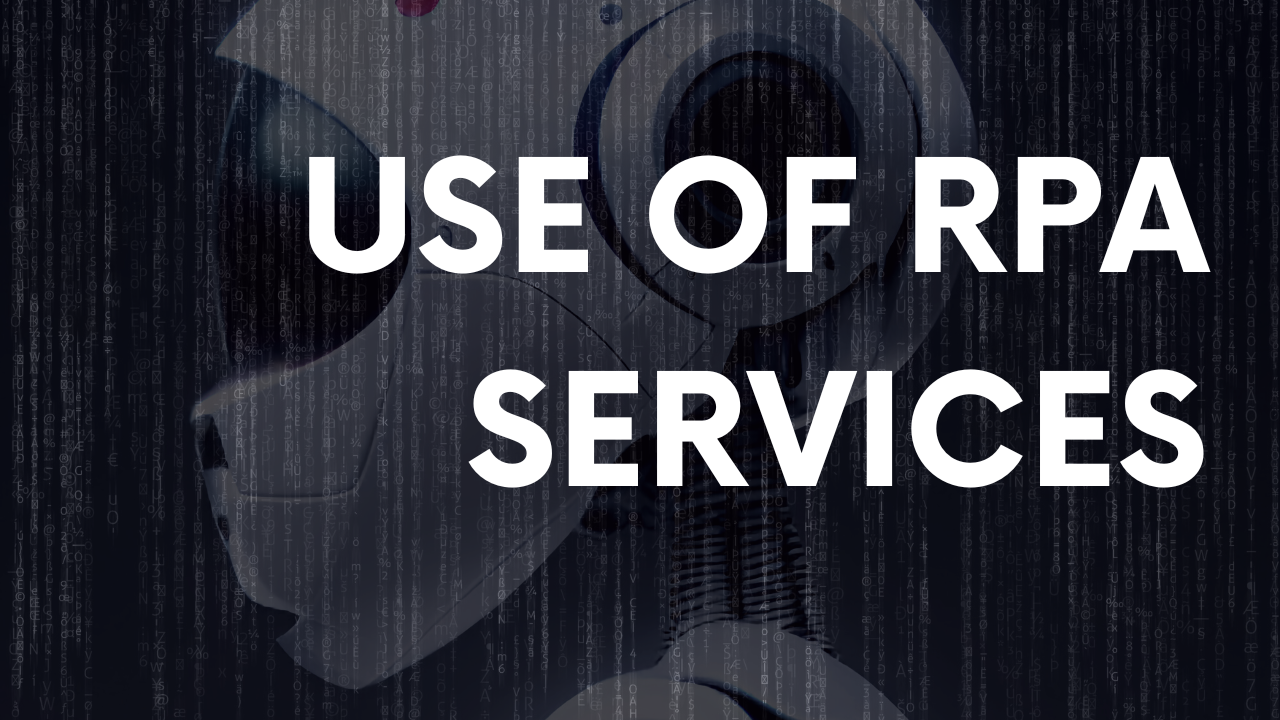Addressing Common Misconceptions about the Impact and Use of RPA Services

As businesses strive to become more efficient and productive, many are turning to innovative technologies like Robotic Process Automation (RPA) services to streamline their operations. However, there are still widespread misconceptions and myths about the impact and use of RPA services. In this article, we will delve deeper into RPA services, debunk common misconceptions, and highlight the true impact of RPA services. We will also provide best practices for implementing RPA services effectively.
Understanding Use of RPA Services
What is Robotic Process Automation (RPA)?
Robotic Process Automation (RPA) is a software technology that enables businesses to automate rule-based, routine, and repetitive processes that are typically performed by humans. RPA services allow businesses to automate and optimize work processes that involve structured data and rule-based decision-making.
Key Components of RPA Services
The three key components of RPA services are robotic software, data parsing and analysis, and machine learning. The robotic software is designed to mimic human actions and is used to automate manual, repetitive tasks. Data parsing and analysis involves capturing data from various sources and analyzing it to make better decisions. Machine learning is used to continually improve and optimize the automation process.
Industries Benefiting from RPA
Use of RPA Services is used across a wide range of industries, including finance, healthcare, telecommunications, retail, and manufacturing. These industries benefit from the technology because RPA allows them to automate repetitive tasks, providing a significant increase in business efficiency, productivity, and cost savings.
Debunking RPA Misconceptions
RPA Replaces Human Workforce
There is a common misconception that RPA services will replace the workforce, resulting in job losses and unemployment. This is not entirely true. Use of RPA Services is designed to automate repetitive and rule-based tasks that are cumbersome and require significant amounts of time to perform. However, human intervention is still required to manage and maintain the automation process.
RPA is Only for Large Enterprises
Another misconception about the Use of RPA Services is that they are only suitable for large enterprises. However, this is not true. Small and medium-sized businesses can also benefit from the technology by automating their processes, reducing costs, and improving efficiency. RPA services are highly scalable, making them suitable for businesses of all sizes and industries.
In the realm of modern business automation, there are several misconceptions surrounding the impact and use of Robotic Process Automation (RPA) services. One prevailing myth is that RPA services are solely focused on desktop-based tasks, overlooking the vast potential they hold for mobile application development. Contrary to popular belief, RPA can seamlessly integrate with mobile platforms, revolutionizing the way businesses operate in the digital landscape. By harnessing the power of RPA in mobile application development, organizations can streamline processes, enhance user experiences, and boost overall productivity.
RPA Implementation is Time-consuming and Complex
There is a perception that RPA implementation is a complex and time-consuming process. However, this depends on the complexity of the process being automated and the level of customization required. With the right guidance and expertise, RPA implementations can be completed rapidly, resulting in faster return on investment.
RPA is Limited to Rule-based Processes
Many people assume that RPA technology is only designed for rule-based processes. Although RPA services are predominantly used for rule-based processes, they can also automate unstructured processes. With the help of machine learning and artificial intelligence, Use of RPA Services can learn and replicate human decision-making processes, making them highly adaptable to a wide range of processes.
The True Impact of Use of RPA Services

Robotic Process Automation (RPA) services are revolutionizing the way businesses operate, by automating rule-based and repetitive processes. This technology has numerous benefits, including increased efficiency, productivity, cost savings, improved accuracy and compliance, and enhanced employee satisfaction.
In the ever-evolving world of technology, Robotic Process Automation (RPA) services have emerged as a game-changer, revolutionizing various industries with their efficiency and productivity. However, misconceptions surrounding the use and impact of RPA services often cloud the true potential they hold. One common misconception is that RPA services replace the need for app developers. On the contrary, RPA complements the skills of app developers by automating repetitive and rule-based tasks, allowing them to focus on more complex and innovative aspects of application development.
Increased Efficiency and Productivity
RPA services allow businesses to streamline their processes and improve efficiency by automating tasks that were previously done manually. This automation reduces the time and labor required to complete tasks, resulting in faster turnaround times and higher throughput. With RPA services, employees can focus on more complex tasks that require human expertise, creativity, and decision-making skills. This not only improves productivity but also leads to a more engaged and motivated workforce.
Cost Savings and Return on Investment
One of the most significant Use of RPA Services is the cost savings they provide. By automating manual and repetitive processes, businesses can significantly reduce operational costs. This reduction in costs translates into a quick return on investment, making RPA services an excellent way to improve business efficiency and profitability.
Improved Accuracy and Compliance
Accuracy and compliance are critical factors for many industries, including financial services, healthcare, and telecommunications. With RPA services, companies can automate repetitive processes with a high degree of accuracy, reducing the risk of errors and improving compliance with industry regulations. This automation also ensures standardized processes, reducing the likelihood of human error and improving quality control.
Enhanced Employee Satisfaction
Manual and repetitive tasks can be monotonous and demotivating for employees. By automating these tasks, RPA services help increase job satisfaction by freeing up employee time to focus on more stimulating tasks that require human expertise and creativity. This leads to enhanced employee satisfaction and productivity, as well as a more engaged and motivated workforce.
In conclusion, RPA services have a significant impact on businesses by improving efficiency, productivity, accuracy, compliance, and employee satisfaction. As technology continues to advance, the potential for RPA services to transform the way businesses operate will only continue to grow.
Best Practices for Implementing RPA Services
Robotic Process Automation (RPA) is a technology that automates repetitive and rule-based tasks. By implementing RPA services, businesses can reduce costs, increase efficiency, and improve accuracy. However, implementing RPA services requires careful planning and execution. Here are some best practices for implementing RPA services:
Assessing Organizational Readiness
Before implementing RPA services, businesses need to assess their organizational readiness. This involves identifying the processes that can be automated, evaluating the technological infrastructure, and determining the level of employee buy-in. Assessing organizational readiness enables businesses to create a realistic roadmap for RPA implementation.
It is important to involve all stakeholders in the assessment process. This includes business leaders, IT professionals, and employees who will be impacted by the automation. By involving all stakeholders, businesses can ensure that the automation process is aligned with organizational goals and that the technology is being used effectively.
Identifying the Right Processes for Automation
Not all processes are suitable for automation. Businesses need to identify the processes that are repetitive and rule-based and require significant amounts of time to complete. This ensures that RPA implementation is cost-effective and efficient.
It is also important to consider the impact of automation on employees. Some employees may be resistant to change, while others may welcome the opportunity to learn new skills. By involving employees in the process of identifying processes for automation, businesses can ensure that the automation process is implemented smoothly and that employees are engaged in the process.
Establishing a Center of Excellence
Creating a Center of Excellence (CoE) is essential for ensuring successful RPA implementation. The CoE is responsible for managing RPA implementation, training employees, and monitoring performance metrics. A CoE ensures that automation is standardized, achieves maximum efficiency, and delivers the expected benefits.
The CoE should be staffed with experienced professionals who have a deep understanding of RPA technology and its applications. The CoE should also have a clear mandate and reporting structure to ensure that it is effective in achieving its goals.
Continuous Monitoring and Improvement
Once RPA services have been implemented, businesses need to continually monitor and improve the automation process. This involves tracking performance metrics, identifying areas for improvement, and continually optimizing the automation process. By doing so, businesses can ensure that RPA is delivering the expected benefits and that the technology is being used optimally.
It is important to involve all stakeholders in the monitoring and improvement process. This includes employees who are impacted by the automation, as well as business leaders and IT professionals. By involving all stakeholders, businesses can ensure that the automation process is aligned with organizational goals and that the technology is being used effectively.
In conclusion, implementing RPA services requires careful planning and execution. By following these best practices, businesses can ensure that RPA implementation is cost-effective, efficient, and delivers the expected benefits.
Conclusion
As we have seen, Robotic Process Automation (RPA) services have significant benefits for businesses of all sizes and industries. They eliminate repetitive and time-consuming tasks, improve accuracy and compliance, and reduce costs while increasing efficiency and productivity. However, businesses must be aware of common misconceptions and follow the best Use of RPA Services. By doing so, businesses can fully realize the benefits of RPA technology while ensuring successful implementation and maximizing return on investment.

